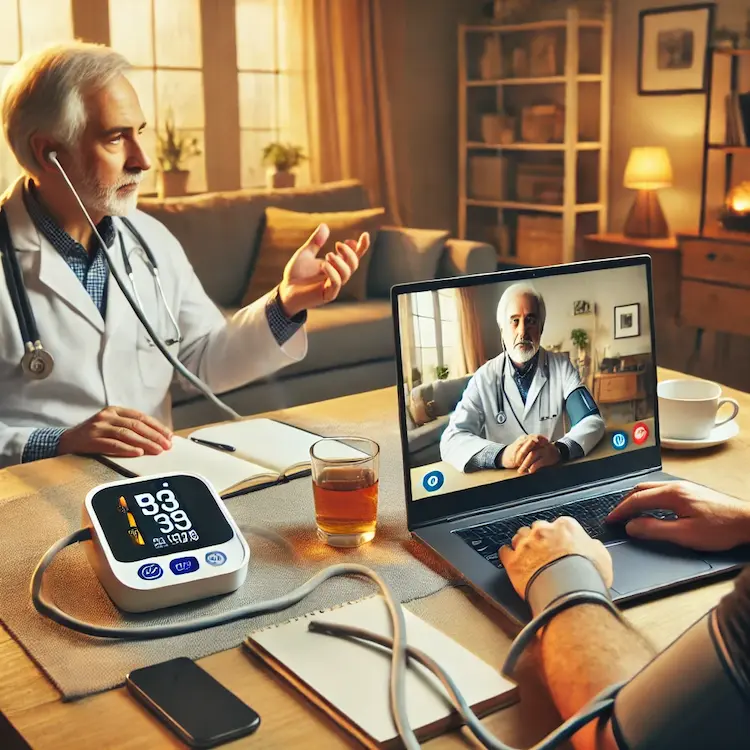Blood pressure monitoring is a crucial aspect of preventive healthcare, yet disparities in access persist worldwide. Many underserved populations, including low-income communities and rural areas, face significant barriers to routine monitoring. These disparities contribute to higher rates of undiagnosed hypertension, leading to severe health complications such as heart disease, stroke, and kidney failure.
This article delves into the importance of equitable access to blood pressure monitoring, exploring various methods, societal implications, and strategies for improving accessibility. It will also compare different blood pressure monitoring tools, analyze global disparities, and offer practical solutions for bridging the gap in healthcare access.
The Importance of Blood Pressure Monitoring
Why Monitoring Blood Pressure Matters
Blood pressure is a vital indicator of overall cardiovascular health. Regular monitoring helps:
- Detect hypertension early, preventing long-term complications.
- Track the effectiveness of lifestyle changes and medications.
- Reduce the risk of stroke, heart attack, and kidney disease.
- Empower individuals to take control of their health.
Health Implications of Unequal Access
Undiagnosed and unmanaged hypertension leads to severe health outcomes. In low-income or rural communities, limited access to blood pressure monitoring results in:
- Higher hospitalization rates due to uncontrolled hypertension.
- Increased mortality risk from cardiovascular diseases.
- Economic burden on healthcare systems due to preventable complications.
According to the World Health Organization (WHO), hypertension affects over 1.28 billion adults worldwide, but nearly 46% remain undiagnosed due to inadequate access to monitoring tools.

Barriers to Equitable Blood Pressure Monitoring
Socioeconomic Disparities
Low-income individuals face multiple barriers, such as:
- Cost of medical devices: Blood pressure monitors can be expensive.
- Limited healthcare access: Fewer healthcare facilities in underserved regions.
- Lack of awareness: Many people do not prioritize blood pressure screening.
Geographic Barriers
- Rural areas often lack medical infrastructure and trained healthcare providers.
- Urban vs. rural divide: In some regions, urban residents are 3x more likely to have regular blood pressure check-ups than rural populations.
Racial and Ethnic Disparities
Certain racial and ethnic groups face systemic healthcare inequalities:
- African Americans have higher hypertension rates but lower diagnosis and treatment rates.
- Indigenous communities face geographic isolation and limited healthcare services.
- Immigrant populations often experience language and cultural barriers in accessing healthcare.
Technological and Digital Divide
- Access to home monitors: Not everyone can afford or use digital monitoring devices.
- Limited telehealth services in rural or underdeveloped regions prevent remote monitoring.
Comparing Blood Pressure Monitoring Methods
| Method |
Description |
Advantages |
Challenges |
| Manual Blood Pressure Cuff (Sphygmomanometer) |
Traditional method used in clinics |
Highly accurate, widely used by professionals |
Requires medical training, not ideal for home use |
| Digital Blood Pressure Monitors |
Automated devices for home use |
Easy to use, widely available, provides quick readings |
Less accurate if used incorrectly, cost can be a barrier |
| Ambulatory Blood Pressure Monitoring (ABPM) |
Worn for 24 hours to track fluctuations |
More accurate for diagnosing hypertension |
Expensive, not widely available |
| Smart Wearable Monitors |
Smartwatches and fitness trackers with BP monitoring |
Convenient, integrates with health apps |
Less reliable than medical-grade devices |
Role of Telemedicine and Remote Monitoring
Telemedicine solutions have improved accessibility by enabling remote consultations and real-time BP tracking. However, digital access inequalities persist, limiting adoption in underprivileged communities.
Addressing Inequities in Blood Pressure Monitoring
Public Health Initiatives and Policies
Governments and healthcare organizations are implementing strategies to reduce disparities:
- Community health programs providing free BP check-ups in underserved areas.
- Subsidized home monitoring devices for low-income individuals.
- Mobile health clinics reaching rural and remote populations.
Technology-Driven Solutions
Innovations in health technology are improving access:
- AI-driven BP monitoring apps that analyze readings and provide recommendations.
- Cloud-based patient monitoring systems used by healthcare providers.
- Smartphone-compatible BP cuffs offering affordability and convenience.
Community-Based Solutions
- Pharmacies and local clinics offering free BP checks.
- Workplace wellness programs encouraging employee screenings.
- Educational campaigns promoting awareness of hypertension risks.

Global Perspectives on Blood Pressure Monitoring Access
High-Income vs. Low-Income Countries
| Factor |
High-Income Countries |
Low-Income Countries |
| Healthcare infrastructure |
Well-established |
Limited |
| Access to BP monitors |
High |
Low |
| Hypertension awareness |
Widespread |
Low |
| Government interventions |
Strong policies |
Limited resources |
Case Studies of Successful Interventions
- India’s Hypertension Control Initiative: Implemented BP screening programs in rural areas, increasing early diagnoses.
- Africa’s mHealth Programs: Mobile technology-driven blood pressure tracking expanded access in remote communities.
- U.S. Medicaid Programs: Some states now cover home BP monitors for low-income patients.
Practical Tips for Improving Personal Access to BP Monitoring
Affordable Home Blood Pressure Monitoring Options
- Opt for clinically validated yet affordable digital BP monitors.
- Use pharmacy kiosks for free BP readings if buying a monitor is not feasible.
- Consider smartphone-compatible BP cuffs as a cost-effective alternative.
Lifestyle Tips for Managing Blood Pressure
- Maintain a balanced diet rich in fruits, vegetables, and whole grains.
- Engage in regular physical activity, such as brisk walking or yoga.
- Reduce salt and alcohol intake to prevent hypertension.
- Practice stress management techniques, such as meditation and deep breathing.
Conclusion: Key Takeaways & Actionable Recommendations
- Equitable access to blood pressure monitoring is essential to reducing hypertension-related health disparities.
- Socioeconomic, geographic, and technological barriers hinder accessibility in underserved populations.
- Government policies, telemedicine, and community initiatives can bridge these gaps.
- Affordable digital BP monitors and public health programs are making monitoring more accessible.
- Individuals can take proactive steps by using community resources, home monitors, and lifestyle modifications to manage blood pressure effectively.
Improving access to blood pressure monitoring will not only save lives but also reduce healthcare burdens worldwide. Ensuring that everyone—regardless of income, race, or location—has the tools to monitor and manage their blood pressure is a critical step toward global health equity.

